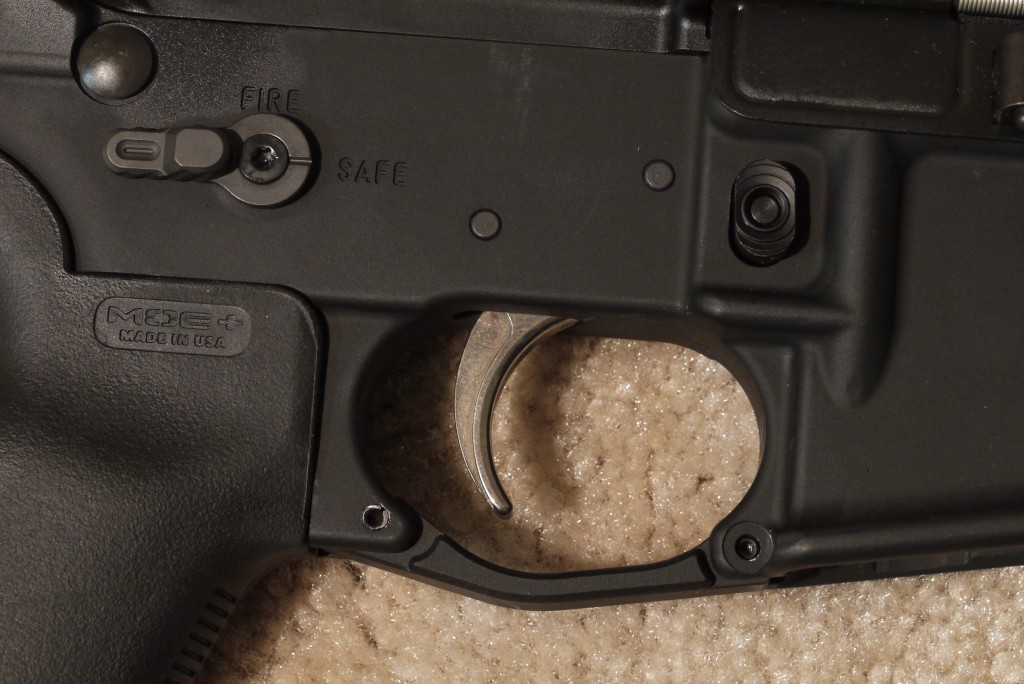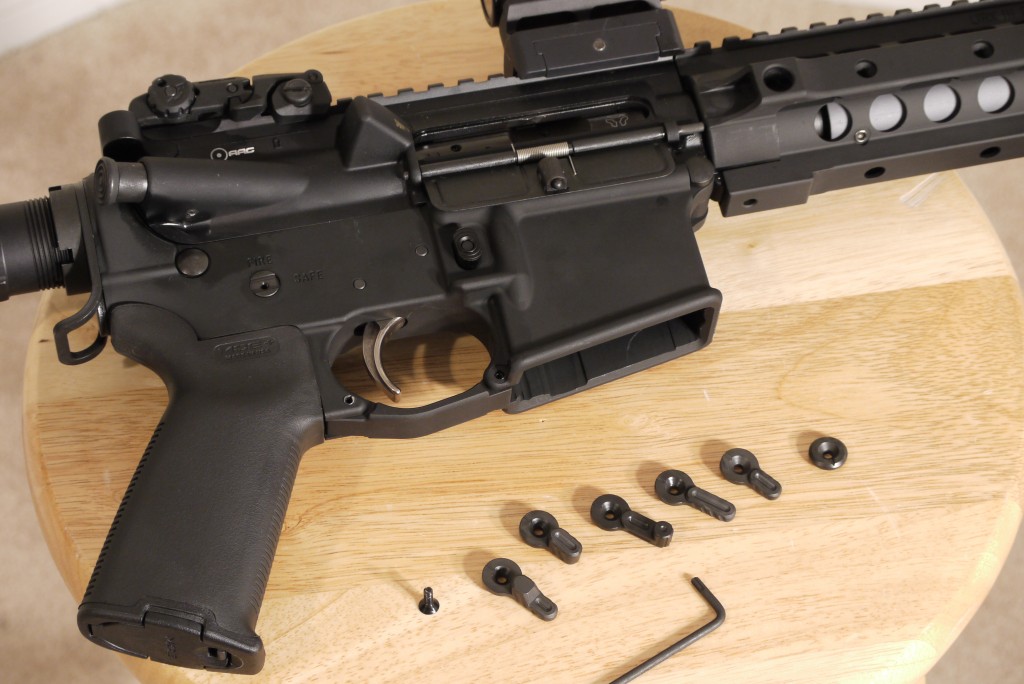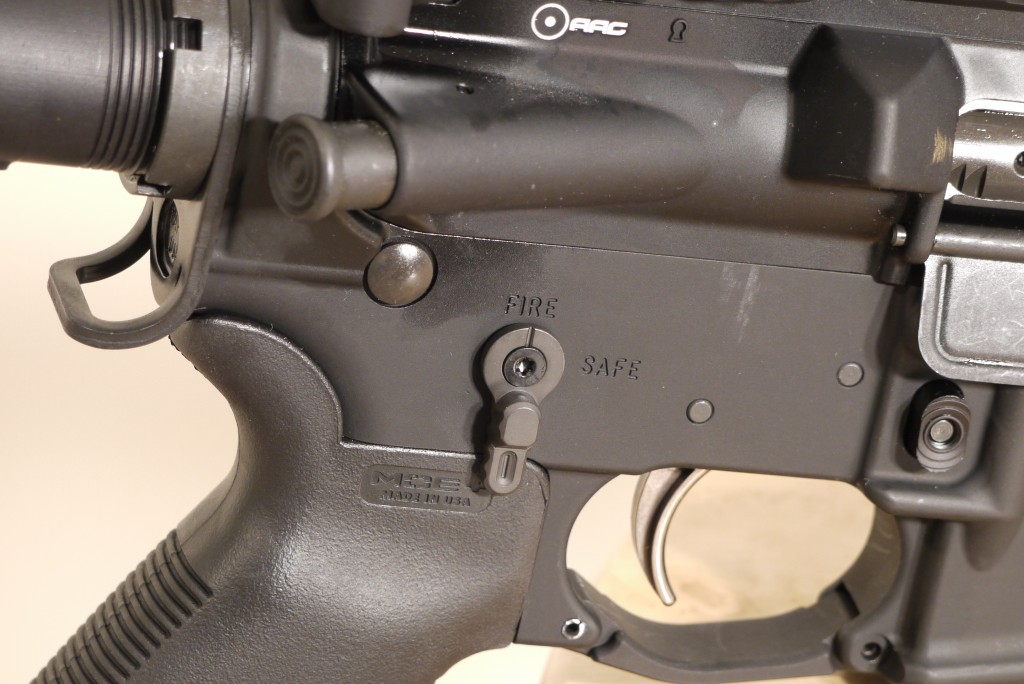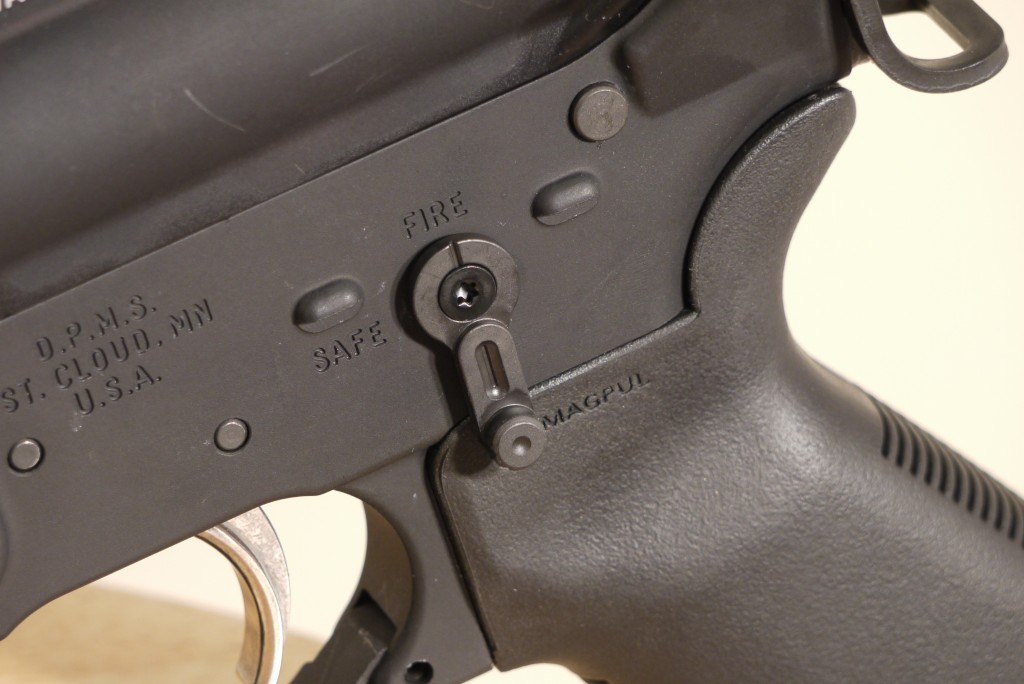When you’re building your AR you have a lot of decisions ahead of you. Some of them are relatively inconsequential, like what color you want your handguards and whether the fuzzy dice will catch fire if you put them too close to the gas system. Other decisions are critical to how the gun will run and feel. In my opinion, the three most critical parts are the trigger, the safety, and the grip, in that order. Battle Arms Development’s Ambidextrous Safety Selector (which forms an acronym after my own heart) has gotten enough buzz that I decided to see for myself what all the fuss was about. And I have to say, I’m quite impressed.
Not everyone likes an ambidextrous safety, and not everyone needs one either. If you’re a right handed shooter and only go to the range for target practice then you’ll probably never have a desire for something more. The standard AR-15 selector switch works just fine when you have all the time in the world. But when time is critical or you’re an unfortunate southpaw in this right hand world of firearms ambi safeties start to look like a good investment.
When I built my competition AR-15, I jumped for a Rock River Arms ambi safety. The choice of an ambi safety was all about speed — it’s a lot easier to “safe” a weapon with an ambi safety than a standard safety. Instead of the “fine” movement required of my thumb by a standard safety, the ambi safety allowed me to perform a more “coarse” movement with my whole hand and still apply the safety quickly. When you’re under the clock “fine” movement is a bit of an issue, so having the controls as easy to operate as possible is a requirement.
The Rock River Arms safety was… okay. It worked. But it was a pain in the ass and a pain in the finger.
The right side lever attached to the rest of the safety body (which was one solid piece of metal) using a small screw that was inserted through a hole in the middle of the receiver. So, if the lever came loose or you needed to change something, you would need to open the receiver and break out the screwdrivers to do it. Not that you’d need to do it often, but working in such a small space (where screws can go missing into the trigger group easily) was annoying.
The “pain in the finger” reference was to my trigger finger. If you’re lying prone for a long distance shot your trigger finger will press against the safety lever on the right side of the gun. It’s mildly annoying at best and flinch inducing at worst. A different lever might solve that problem, but they don’t exist for the RRA safety.
That’s where the BAD-ASS comes in.
With the BAD-ASS the levers on both sides are replaceable with the quick spin of a Torx screw that is easily accessible from the outside. They also have a wide variety of levers available for your gun depending on your style. After messing around with their safety for a few days I quickly found that I liked the “crank” lever on the left and the “hybrid” lever on the right (Battle Arms Development were nice enough to send me the full set of levers to play with).
I want to spend another minute on the genius of the “hybrid” lever. Remember I was talking about how the RRA safety kept annoying me by pressing into my trigger finger? The “hybrid” lever from BAD is almost flush with the receiver where my trigger finger usually rests, but still has a protruding nub above that to allow me to quickly flip the safety back on once I’m done. It’s perfect for the “other side” lever choice, whether you’re a righty or a lefty.
The “crank” I like because it feels good against my thumb and gives me a little more power against the detent. The nub at the end focuses all of the energy from my thumb against the end of the lever, giving me a little mechanical advantage to force that safety off quicker. Which is especially helpful with this latest run of safeties, as BAD has decided to make the detent groove shallower. This makes the safety a little bit stiff, but the Battle Arms Development guys seem to think it makes the safety safer. From Roger:
Please note that for this production run, we made the detent groove shallower to retain more spring tension. With our original design and its deeper detent groove, with some receivers/pistol grip combination, the spring can sometimes exert inadequate tension on the detent.
This batch has a shallow detent groove, which you may find very stiff to rotate. If that’s the case, you can cut off a coil of detent spring and it will ease up quite a bit.
Future production units will have a detent groove height between the original and this latest run, a middle of the road approach.
While I noticed that it was a little stiffer to move it wasn’t excessive. I was still able to manipulate the safety, it just took a hair more force to do.
Despite the stiffness, this is still the best safety I’ve ever had a chance to play with. The ergonomics, the ease of use, and the design of the levers are all brilliant. I’ve been sitting here for an hour trying to come up with a single complaint, and I can’t think of one. Perfect.
Battle Arms Development Ambidextrous Safety Selector (BAD-ASS)
Specifications
Weapon: AR-15, AR-10, Semi and Full Auto available
Material: Steel
Levers: Choice of 2-3 levers
MSRP: $79
Ratings (Out of Five Stars)
All ratings are relative to other similar products. Overall rating is not mathematically derived from the constituent ratings.
Ergonomics: * * * * *
The “hybrid” lever moves their ergonomics into the five star range. It’s clear that they’ve thought about the problem shooters face and tried to solve it with some innovative designs.
Ease of Use: * * * * *
Levers are removed and replaced in under 30 seconds without having to open the receiver.
Overall Rating: * * * * *
I can’t think of a single reason not to buy this safety. Even if you only want the lever on one side the options Battle Arms Development makes available for that solitary lever are impressive. The price may be prohibitive for those on a budget, but if you’re looking for something to upgrade on your gun that won’t break the bank this should be on your list. Right after a new trigger.








Nice review. Looks like a winner mechanically.
Perhaps I’m too worried about my disposable income, but 79.00 is a bit too salty for my taste. Even though it appears to be a considerable improvement over standard, and with the cool options included.
Forty, definitely. Fifty, probably. Eighty bucks? By comparison that’s several hundred rounds of ammo.
Admittedly; I’ve just recently dropped a chunk of change on accessories for a new boomstick. So I’m somewhat frustrated at the “tactical flexible shaft naval lint extractor with synthetic microfiber interwoven dual-ended tip” when I can buy a Q-Tip for 0.02.
I agree it’s a lot of a hunk of metal, but this is the “five star” safety – the gold standard, the Mercedes Benz of safeties. The Rock River Arms ambi safety is in the $25 range and of acceptable quality and functionality, much like a 2011 Ford Fiesta is of acceptable comfort and accommodations for the price. Like I said, it has issues, but for $25 I won’t complain. Much.
Great review. Being a lefty (and more creative) in a right handed world, I have learned to adapt and over come. But I’ll def be checking those safeties out!
I’ve never seen the cylinder on a stick lever that you have setup on the left side of your lower; Is that something that is likely to see the light of day anytime soon?
They are expensive for an AR-15 safety, but they are machined parts–these are not inexpensive, weak(er) MIM parts. While that isn’t exactly necessary for a safety, it doesn’t help Battle Arms’ costs.
I personally use their safeties exclusively on my AR-15s and will never look back. I never realized how much improvement the AR-15 safety could have until I used one. A lot of products sold for AR-15s these days are solutions looking for problems, but this safety is definitely not one of those.